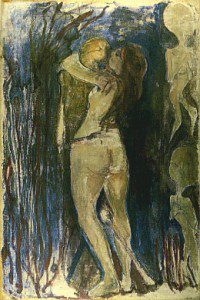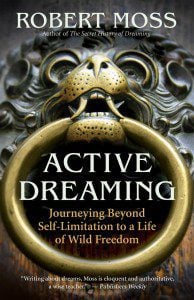
We do not know where death awaits us, so let us wait for it everywhere. To practice death is to practice freedom. A man who has learned how to die has unlearned how to be a slave.
This wisdom comes from the great French essayist, Montaigne, and I count it as one of the essential rules for living.
To live today to the fullest, we want to be ready to die. When we approach life in the knowledge that Death is at our left shoulder, we find courage and clarity that may otherwise fail us.
I am thinking about these things today because of the unexpected death of a friend who was just 50 years old, and had seemed to be in excellent health before he suffered a massive stroke. He was greatly loved, and will be greatly missed. Such an event grips the heart, and compels us to look again at how we are living, or failing to live. It reminds us that we walk every day in the presence of Death, and must live accordingly.
I have known this since I was a child, when I died and came back, as the Melbourne doctors put it, not yet possessing the term “near-death experience”. In my books and workshops, I encourage people to make Death their ally rather than their dread, and to be ready to meet him on any day, on any corner.
What does it mean, to “practice death”?
An art of dying adequate to our needs and yearnings today must address at least these five key areas:
- Practice in dream travel and journeying beyond the body. By practicing the projection of consciousness beyond the physical plane, we settle any personal doubts about the soul’s survival of physical death. This is not really an exotic or esoteric assignment. Every night, in your dreams, you travel beyond the body quite naturally and spontaneously; it’s a matter of waking up to what is going on and learning to use your natural gifts as a dreamer,
- Developing a personal geography of the afterlife. Through conscious dream journeys, we can visit the deceased — and their teachers — in their own environments. We can explore a variety of transit areas and reception centers, adapted to the expectations and comfort levels of different types of people, where the recently departed are helped to adapt to their new circumstances. We can tour the “collective belief territories,” some established centuries or millennia ago, where ex-physicals participate ins hared activities and religious practices. We can examine processes of life review, reeducation, and judgment and follow the transition of spirits between different after-death states. We can also study the different fates of different vehicles of consciousness after physical death.
- Helping the dying. We can use dreamwork and the techniques of Active Dreaming – including vision transfer, which means growing a dream or a journey map for someone who needs one – to help the dying through what some hospice nurses describe as the “nearing death experience.”In many of our hospitals (where most Westerners die) death is treated as a failure, or merely the loss of vital signs, followed by a pulled-out plug, a disconnected respirator, and the disposal of the remains. As we recover the art of dying, many of us in all walks of life — not only ministers and health care professionals and hospice volunteers — will be able to play the role of companion on the deathwalk, helping the dying to approach the next life with grace and courage and to make the last seasons of this life a period of personal growth. The skills required in this area include the ability to communicate on a soul level with patients who are unable to speak or reason clearly. A vital aspect of this work is facilitating or mediating contact between the dying and helpers on the other side — especially departed loved ones — who can give assistance through the transition. Dream sharing and dream transfer are invaluable tools in helping the dying to prepare for the conditions of life beyond the body.
- Helping the departed. We pray for our dead in our churches and temples, and no good intention is ever wasted. However, you may have a hard time finding a priest who is willing to take on the role of psychopomp, or guide of souls, and provide personal escort service to spirits of the departed who have lost their way and gotten stuck between the worlds, causing pain and confusion to themselves and sometimes to their survivors. Yet the living have a crucial role to play in helping to release earthbound or troubled spirits. For one thing, some of these “ex-physicals” seem to trust people who have physical bodies more than entities that do not, because there is comfort in the familiar, because they did not believe in an afterlife before passing on — or quite simply because they do not know they are dead. Sometimes our deceased need help from us in dealing with unfinished business, passing on messages to survivors, and getting their story straight. I have become convinced that an essential stage in the afterlife transit is the effort by the departed to understand the full story of the life that has just passed, in order to be ready to choose the next life experience.
- Making death your ally. Finally, we are challenged to reach into the place of our deepest fears and master them: to face our own death on its own ground and re-value our lives and our purpose from this perspective. When we “brave up” enough to confront our personal Death and receive its teaching, we forge an alliance that is a source of power and healing in every aspect of life.
~
Parts of this essay are adapted from Dreamgates: Exploring the Worlds of Soul, Imagination and Life Beyond Death by Robert Moss. Published by New World Library.

